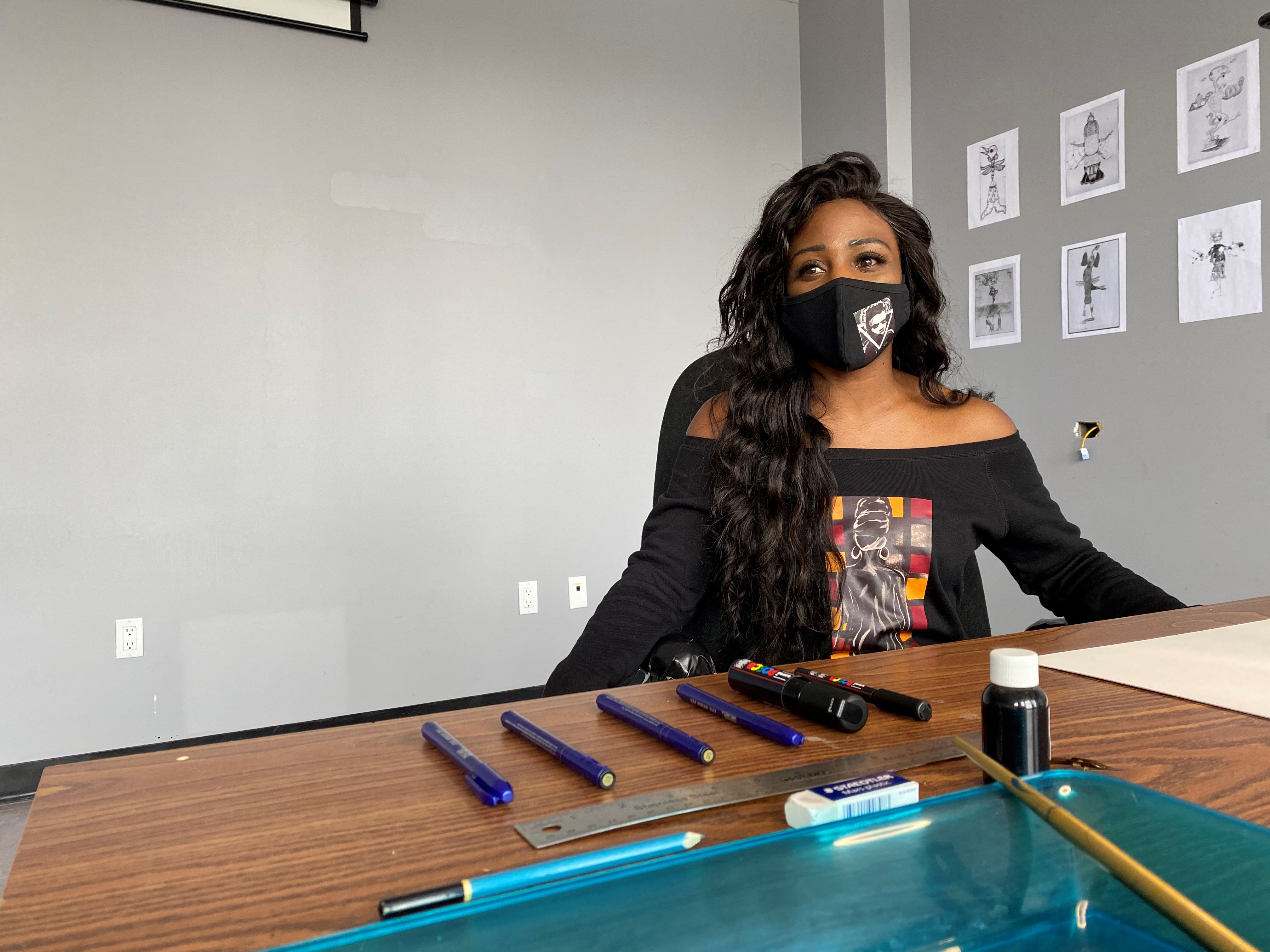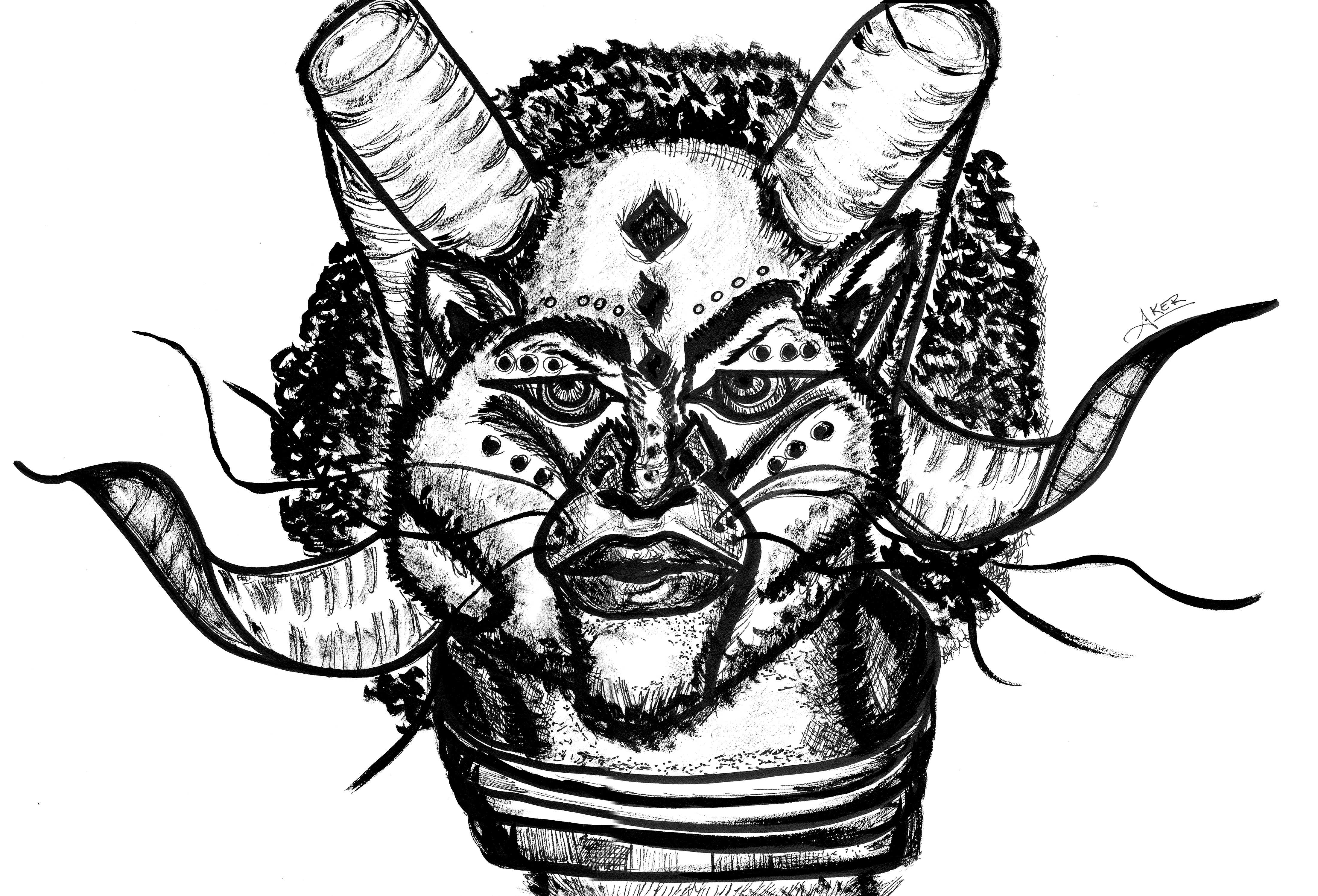Moving from our office desks to our kitchen tables meant more than just physically moving a laptop. Much of the magic in our companies comes from collaborating with co-workers in meetings or bumping into someone at the coffee machine. Working apart required us to lean heavily on collaboration tools like Slack, Teams, Hangouts and Zoom to create a digital bridge in place of those lost physical interactions.
That same drive to stay connected helped a group of local artists work on a new project launched this month from the 44 Gaukel Creative Workspace, called The Beasting. The project is a modern-day version of a 1920’s parlour game called “the exquisite corpse.” Each person takes a turn drawing part of an image in the game and then passes on the work to the next person with all the previous contributions hidden. The result is a unique creation – or, in this case, a unique beast.
For Eric Rumble, arts & creative industries co-ordinator at the City of Kitchener, The Beasting is a chance to connect local artists and showcase the growing art scene in Waterloo Region. The Beasting evolved out of an event at 44 Gaukel that celebrated its renovations in February 2020, just weeks before the COVID-19 pandemic struck.
“We were spitballing some ideas about an event and Vincent Marcone of My Pet Skeleton suggested this idea of playing with the exquisite corpse concept,” said Rumble. “It was a blast when it happened. We had this beautiful moment at the end of that event where we married what each of the artists — Marcone, Luke Swinson, Ethel Voronkova and Sumaira Tazeenhad — created. It was just a really awesome moment.”
Marcone and Rumble started planning a larger version of the game that would have potentially involved artists at multiple venues, but those plans were sidelined due to the pandemic. Rumble said they were still excited about the idea and wanted to find a way to use it to keep artists connected.
“We just landed on this digitally focused approach to the idea that we could use as a way of getting more artists into the mix,” he said.
The Beasting expanded the number of artists involved to 24 artists working to create six different, interchangeable beasts. The artists were put into groups of six and Rumble assigned them what section they would work on: legs and feet, lower body, upper body or the head.
“Rather than just four pieces that make one, you have six sets of four pieces that can make six or any sort of number of different combinations,” Rumble said. “We landed on the notion that we could actually do this whole thing digital and have a ton of fun with it in terms of capturing, profiling and presenting artists’ work. And, whenever we’re in a position to have people in a space to get together, there’s also all sorts of fun possibilities with actually showing the result of these things.”
Waterloo Region is home to a thriving and diverse arts community, and Rumble wanted The Beasting to reflect that. Working with Marcone and his team at the city, they put together a list of artists to invite. “We got some folks from the older generation of artists who are working here. We also drew from the younger pool of artists,” Rumble said.
One of those artists is Cambridge-based visual artist Alana Decker. Decker primarily works with acrylic on canvas, and The Beasting was a unique opportunity for her to try something different and connect with other local artists. Decker is a survivor of domestic violence who uses art as both therapy and a way to connect communities

Alana Decker at 44 Gaukel
(Photo courtesy: Eric Rumble)
“I want to show the other side of what happens when you are a survivor; the things you can accomplish,” Decker said. “I want to protect beauty, I want to protect the beauty in marginalized communities. Being able to put that on a canvas was for me a beautiful thing.”
Rumble learned about Decker through local art connector and CAFKA General Manager, Glodeane Brown.
“She’s pretty amazing,” Decker said of Brown. “She vouched for me to give me a shot and that’s how I ended up being a part of the 24 artists that collaborated together. I was very grateful to be one of the chosen ones this time around.”
Like many artists, Decker works alone much of the time, so The Beasting was an opportunity to work with other artists and explore new ways of creating.
“What I loved about this project was the fact that I was able to think outside the box and be weird. That was what Eric was saying – be weird, but be authentic to yourself. It’s not something I would normally draw, which is why I like it,” she said.
Discovering other local artists was another benefit for Decker. “I didn’t even know half of these artists that are a part of the project. Now I feel like I’m a little bit more engaged in their art. It’s very positive for sure.”
Decker said The Beasting helped her see how much creativity we have in Waterloo Region.
“There’s so many artists, so many different types of artists. We have a great community in just the fact that they’re so supportive,” she added.
The Beasting will release pieces from the 24 artists in batches between July and October. Each release will be accompanied by an artist profile on Midtown Radio, a hyperlocal internet radio station based in 44 Gaukel. Rumble sees this as the start of a series of collaborations.

Alana Decker's contribution to The Beasting
“The Beasting is definitely going to last for two or three years at this point,” he said. “I love the possibility of it being a platform to be able to bring a bunch of artists from different parts of the region together in a collaborative act that they probably wouldn’t have sought out themselves.”
The 44 Gaukel Creative Workspace is no stranger to collaborations. The space is a joint venture between the City of Kitchener, ArtsBuild Ontario and the Accelerator Centre, with space available for artists, creatives, non-profits and innovators.
The pandemic delayed many of the plans for the team at 44 Gaukel, but Rumble hopes tenants will be able to return and work together again soon.
“We’re really happy that we’ve been able to retain most of the tenants that we had in the space and we’ve added a couple too,” said Rumble. “I definitely have a vision where the space is a central place for arts in Waterloo Region. Part of The Beasting is aimed at finding ways to draw artists from the community into the space to contribute work for public consumption and have people identify it as a spot where creative things are happening.”
You can see the first batch of The Beasting artists and their contributions on thebeasting.ca.

